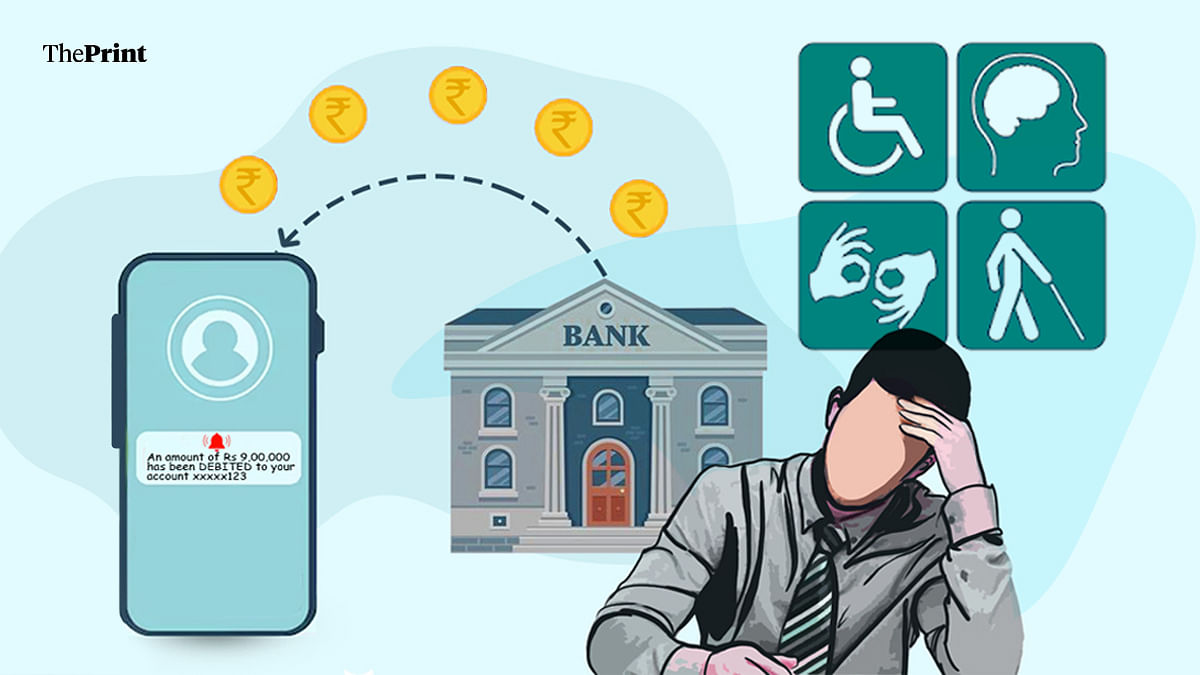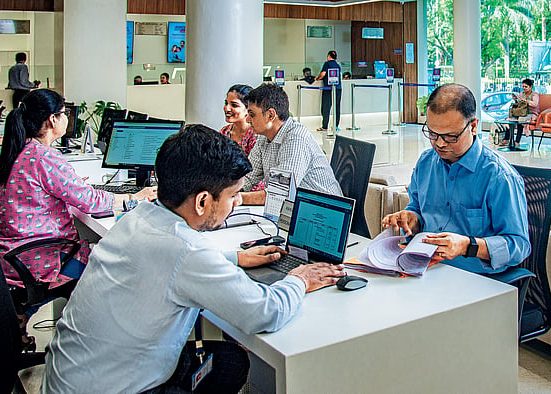New Delhi: It was nearly five years ago, during the COVID-19 lockdown in 2020, when Anchal Bhateja’s father misplaced her debit card. On going to the bank’s nearby branch, the bank manager flatly refused to issue her a new one, telling the visually-impaired girl, “You are prone to losing it”.
Although his reasoning sounded absurd, it wasn’t unusual, Bhateja told ThePrint while adding that access to banking is often taken for granted by non-disabled persons. “For persons with disabilities (PwDs), every layer—tech platforms, ATM kiosks, mobile apps, building infrastructure—remains riddled with exclusion,” she said while adding that these aren’t just inconveniences, but statutory violations of Sections 40 and 46 of the Rights of Persons with Disabilities Act, 2016, and the standards notified under it.
This is what prompted Bhateja to knock on the doors of the Delhi High Court in June this year, in a bid to make ICICI bank’s services structurally accessible. “ICICI’s website, its Mobile Pay app, website, and InstaBiz platform lack basic accessibility features and screen reader software, which otherwise aids visually-impaired persons in reading text, and are unable to interpret the login fields due to unlabelled buttons,” she said.
On 1 July, a bench of Justice Vikas Mahajan, sought a response from the ICICI, in four weeks’ time. The matter will be taken up next on 27 October.
Notably, Bhateja added that this does not mean that other banks don’t have accessibility problems. “It’s in fact an industrywide problem. A lot of times private banks create administrative hurdles, despite the RBI guidelines saying you cannot exclude persons with disabilities from having bank accounts,” she said.
Also Read: For the visually impaired, entering medical and legal fields in India is like navigating a maze
The laws invoked & the larger fight
Section 40 of the Rights of Persons with Disabilities Act, 2016, requires the central government to formulate rules for those with disabilities, and lays down standards of accessibility for the physical environment, transportation, information and communications, including appropriate technology, systems and other facilities and services provided to the public in urban and rural areas.
Section 46 says both the government and private entities should provide their services in line with accessibility rules formulated by the Centre under Section 40 within two years from the time these rules are notified.
Disability rights non-profit Mission Accessibility co-founder Amar Jain, who is also visually-impaired, had a significant role to play in inspiring Bhateja, she told thePrint.
“He championed the fight in making KYC processes accessible in Amar Jain vs. Union of India, where the Supreme Court’s two-judge bench on 30 April, passed a slew of directions aimed at ensuring the accessibility of KYC services.”
In his plea, Jain, along with acid-attack survivor Pragya Prasun, spoke of the challenges faced by him, and others like him, who encounter daily difficulties in establishing account-based relationships, conducting transactions, availing services and verifying their identity—whether as a customer or as a citizen accessing government schemes.
These difficulties arise primarily because digital KYC/e-KYC/video KYC norms are not designed keeping in view the accessibility needs of persons with disabilities, the plea had said, while pointing to concerns like how the face recognition method doesn’t provide adequate guidance on how to correctly align one’s face to the camera.
“Consequently, individuals with visual impairments or facial disfigurements are often unable to complete the process independently and require assistance from a sighted person,” the petitioners had told the court.
Speaking to ThePrint, Mission Accessibility co-founder Amar Jain said, accessibility in India is a systemic deprivation and when things are designed, PwDs are considered only as an afterthought, if at all. “KYC has become so essential to several critical aspects of life such as applying for an Aadhar card, buying furniture, and even for opening a bank account, demat account, pension account, trading accounts, or getting SIM cards, insurance policies, or any type of financial investment, such as mutual funds,” said Jain.
“The major reason for me approaching the court for this was because persons with disabilities weren’t even considered in the process of designing it,” he added. However, this is not the first time Amar has approached the court for making financial services more accessible for PwDs.
In a 2016 case before the Delhi High Court, Amar’s assistance was sought on this subject, causing him to highlight the KYC issue previously, but even then the Reserve Bank of India (RBI), refrained from taking a proper stance, he said.
Finally, the issue came before the Supreme Court this year, and led the court to direct appropriate authorities to ensure that online services including e-governance platforms, digital payment systems, and e-launching platforms, are made accessible to persons with disabilities, thereby fostering a barrier-free digital environment.
The case against ICICI
In her plea, Bhateja, a long-standing customer of ICICI, sought to address the inaccessibility of ICICI bank’s digital banking services, including its iMobile application for personal banking, its website, and its InstaBIZ corporate banking application.
These platforms consistently fail to meet the accessibility standards, which in turn prevents those with disabilities from independently performing basic and essential financial tasks like logging in, viewing bank account statements, making payments, adding payees, managing beneficiaries or completing transactions that require two-factor authentication, the plea said.
Lack of accessible design and assistive technology support across services severely impairs the financial autonomy of PwDs and excludes them from independently accessing and managing core functions, the plea added, while noting that the fundamental rights of petitioners, like their right to life, equality, and freedom of speech and expression, under Articles 21, 14 and 19 were being violated in the process.
The plea also pointed to other problematic aspects of ICICI’s digital banking platform, such as “unlabelled buttons, inaccessible form fields, non-functional screen reader interactions and reliance on visual-only features—such as QR code scanning, swipe-to-pay functions, and grid-based two factor authentication—which creates significant barriers” for persons with disabilities, including those with blindness, low vision and even learning disabilities. It also highlighted how those with disabilities have a hard time logging in, adding account details, viewing account statements and activating the pay option.
Seeking to strictly enforce the accessibility laws, circulars and guidelines, and to hold ICICI bank accountable for its continued non-compliance, and failure in enabling independent access to financial services for persons with disabilities under Sections 89 and 90 of the 2016 Act—which entail punishment for contravention of the Act’s provisions, or the rules and regulations made under it, and offences done by companies—the petitioners approached the HC.
(Edited by Viny Mishra)



